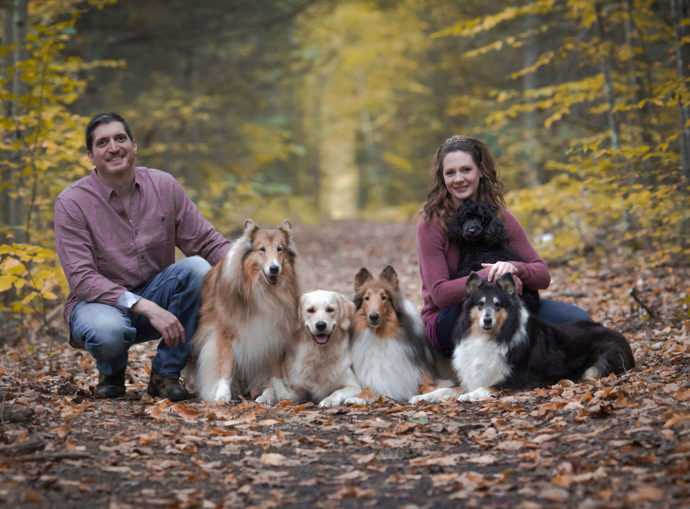Throughout the summer my hubby, dogs, and I are fortunate to be able to enjoy many weekends in Kennebunk, Maine, thanks to my in-laws. They own a denture business, whose office sits below a comfortable condo that often becomes our weekend home.
The fortunate thing about staying above a denturist’s office are the many magazines in the waiting room that I can choose from to bring as my light reading to the beach. I’ll be honest, after spending my busy weekdays running a business, on weekends I prefer to turn off my brain and indulge in mindless reading, my magazine of choice is People Magazine! However, this past weekend as I browsed the waiting room table, a magazine cover caught my eye. A National Geographic magazine pictured a fox on it’s cover, headlining their feature article, “Designing the Perfect Pet.”
I immediately knew the article. I posted my thoughts on it a couple months ago. However, in hopes that the actual magazine had more content on the subject than the online version that I had read, I scooped up the magazine and eagerly headed off to the beach.
For those of you who did not read my last post on this subject, I’ll quickly summarize. A study about animal domestication in Siberia has raised and bred foxes for friendliness. They now have a population of foxes that greet humans and crave attention just as your yellow lab or golden retriever does. What’s more, these foxes have changed in appearance; they have floppy ears, curled tails, and a piebald coloration. The study suggests that the genes that are necessary for domestication, also correlate to changes in appearance and behavior. To read the entire article, you can click here.
In browsing the magazine, I was correct in that there was more content in the magazine than the online version. However, it wasn’t where I expected to find it! As I read the Editor’s Note, I was incredibly intrigued by what was said and the suggested theory. So much that after reading it, I nearly ran across the beach to where my hubby was searching for sea glass and read it out loud to him (I’ve said it before and I’ll say it again, yes I’m a dork, I love this kind of stuff.)
And just as I hurried over to my hubby to share what I read, I hurried this morning to put together this blog to share with you the editor’s note. The end of the second paragraph is the part that I found most interesting:
“In Jackson’s mind there is no such thing as a good person or a bad person. There are only people he desperately wants to meet. Jackson, I should explain, is my Jack Russell terrier. When he meets someone, his short tail wags at warp speed, sending a vibration through his piedbald body right up to his floppy ears. He is exuberant, playful, affectionate – everything a dog lover could wish for. He fits the description of an animal domesticated through years of selective breeding.
In this month’s issue we explore animal domestication, which began more than 15,000 years ago with dogs. As humans bred wolves to be our hunting companions and friends, changes in appearance occurred along with changes in behavior. Traits that might otherwise have been weeded out in the wild survived because they were, well, cute. Jackson, with his piebald coloring and floppy ears, is a classic example. But I think there is more to it than that. When my family went shopping for a dog, Jackson confidently trotted over and made it clear he liked us. We immediately responded by picking him up and hugging him. I have to wonder if there is something in human genes that makes our response to a puppy so immediate and positive. Are we genetically predisposed to connect with dogs? Can a case be made that dog lovers had a better chance of survival with the help of man’s best friend – in a violent and uncertain world – to put food on the table and guard against threats? It makes sense to me, but cat lovers may not buy my theory.”
Chris Johns
Are we predisposed to connect with dogs because our ancestors were more likely to survive if they were using domesticated wolves to hunt, for protection, and as companions? They now say that people who own a dog are healthier, happier, and perhaps live longer. Was that the case 15,000 years ago when dogs first became domesticated? Let me know what you think!

